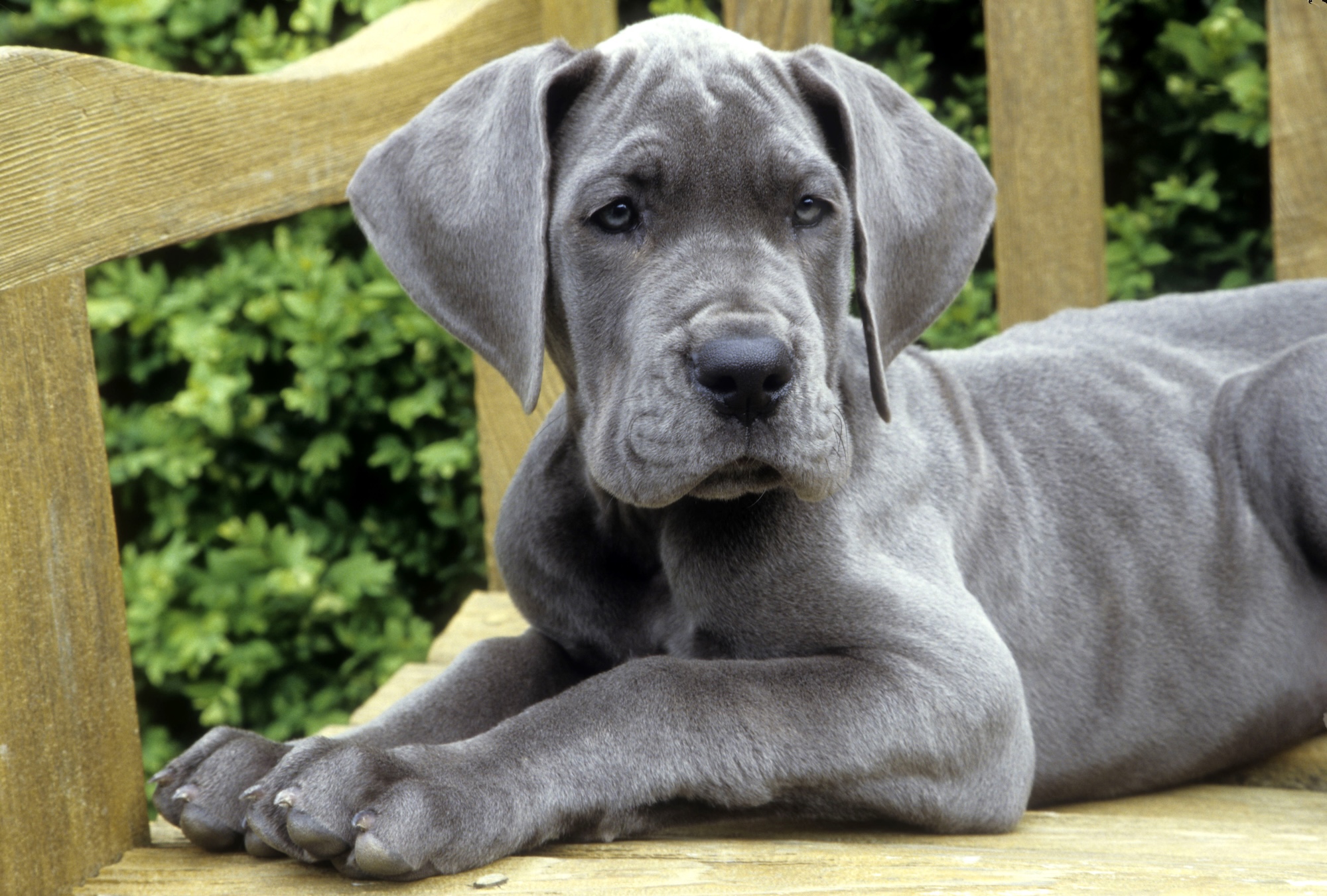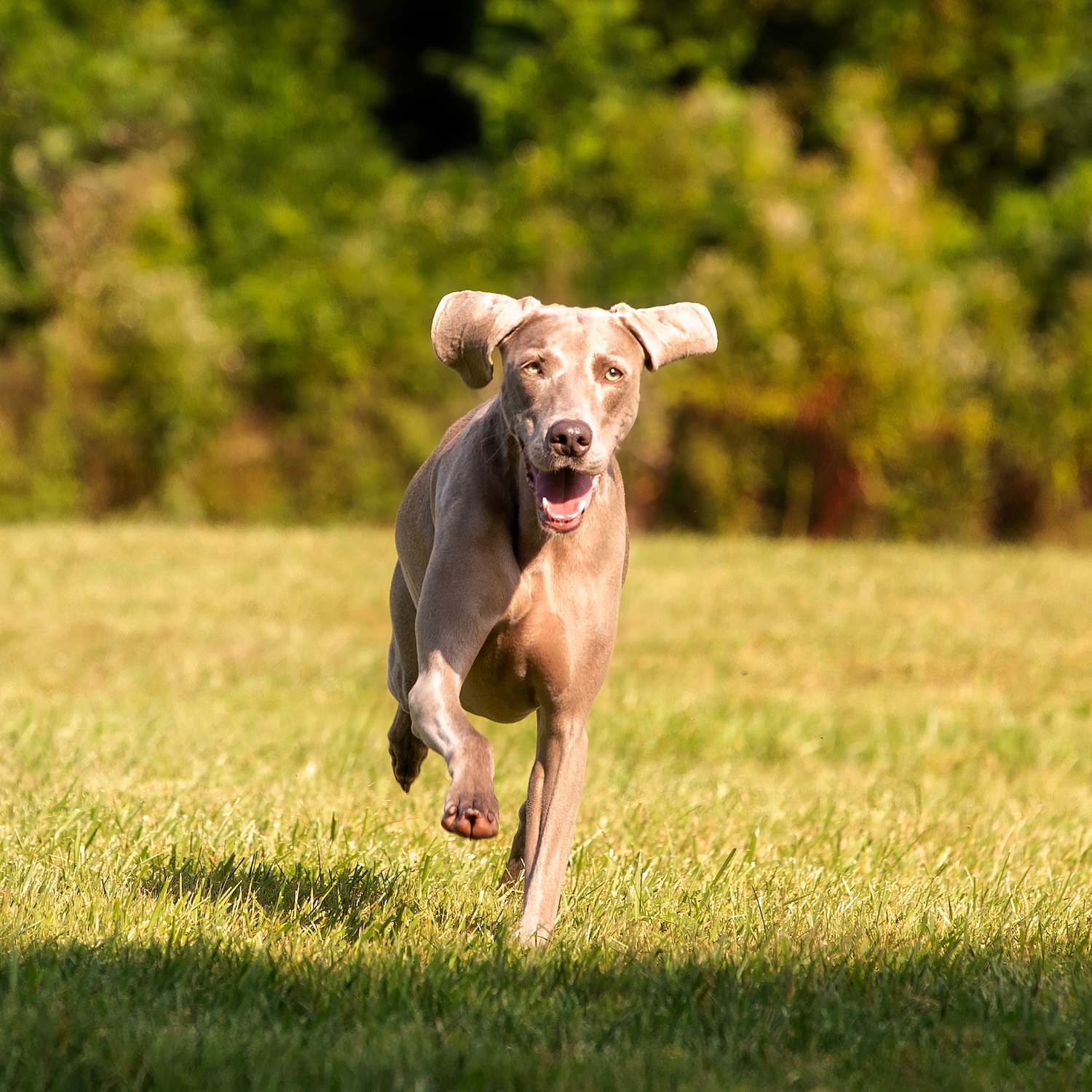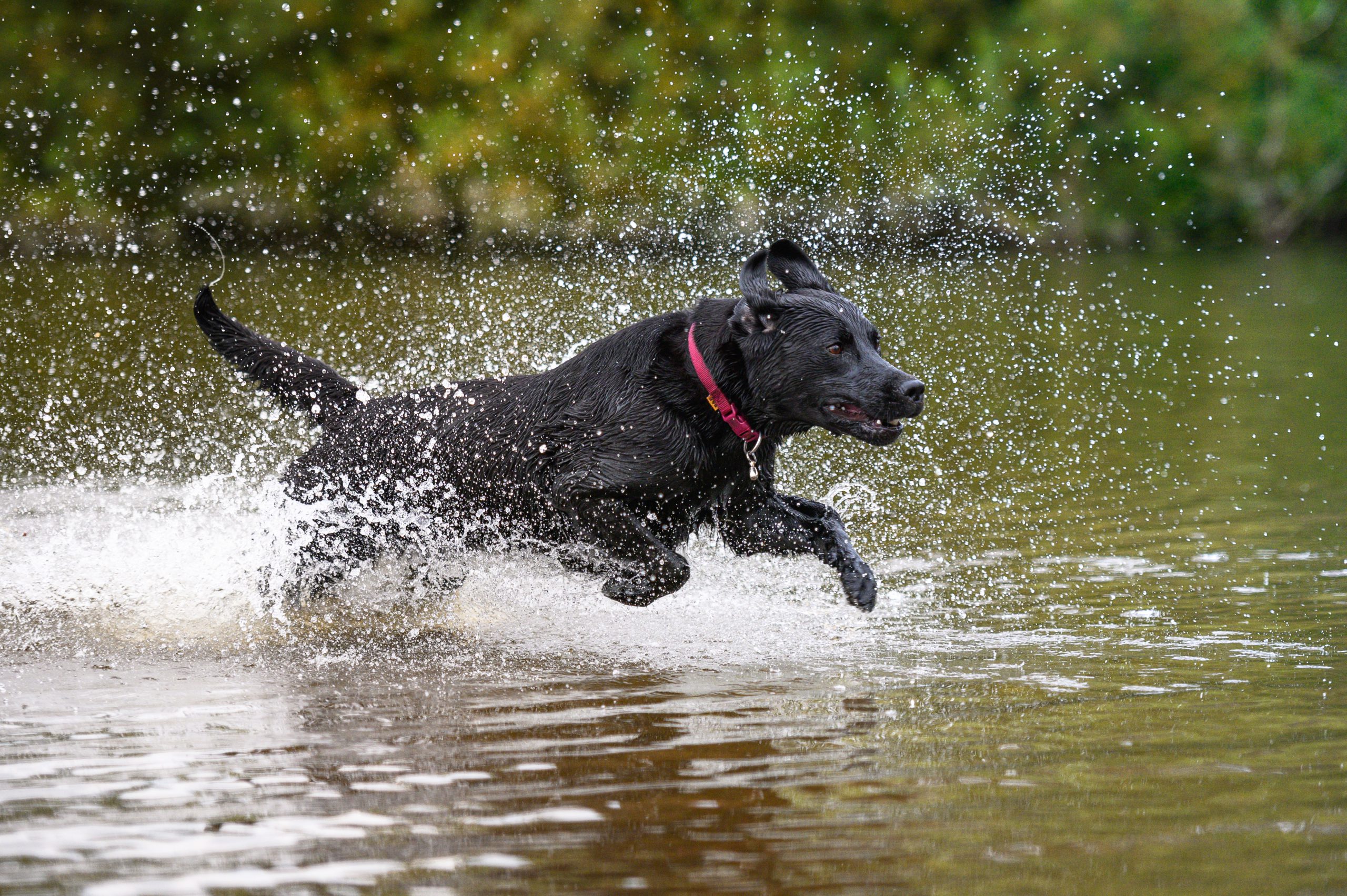Doberman pinschers are smart, energetic, affectionate dogs who love to be with and protect their humans. Originally bred by Karl Friedrich Louis Dobermann, a German tax collector, they’ve worked in security, search-and-rescue, and the military. They’re also popular companions. Though their history and appearance make them intimidating to some, Dobermans get along well with children when they’ve been properly trained and socialized, and make good family pets. However, they do need a generous amount of mental and physical exercise, along with consistent training—all factors that any prospective owner should weigh before bringing one home. Read on for more details about these considerations and other tips that can help you decide whether to make a Doberman a part of your family, or take better care of the one who already is.
Basic Doberman pinscher facts
According to the American Kennel Club, Dobermans live an average of 10-12 years. Males can grow up to 100 pounds, while females may reach 90. Dobermans have short coats, and the AKC lists four standard coat colors (you may notice that “rust” is a theme): black and rust, blue and rust, red and rust, and fawn (Isabella) and rust. The Doberman Pinscher Club of America (DPCA) does not recognize white, or albino, Dobermans, because their breeding has led to an increased risk of serious conditions including cancer. While the Doberman has traditionally sported cropped ears and a docked tail, the American Veterinary Medical Association opposes these procedures when they’re done for a purely cosmetic purpose—and some governments ban them.
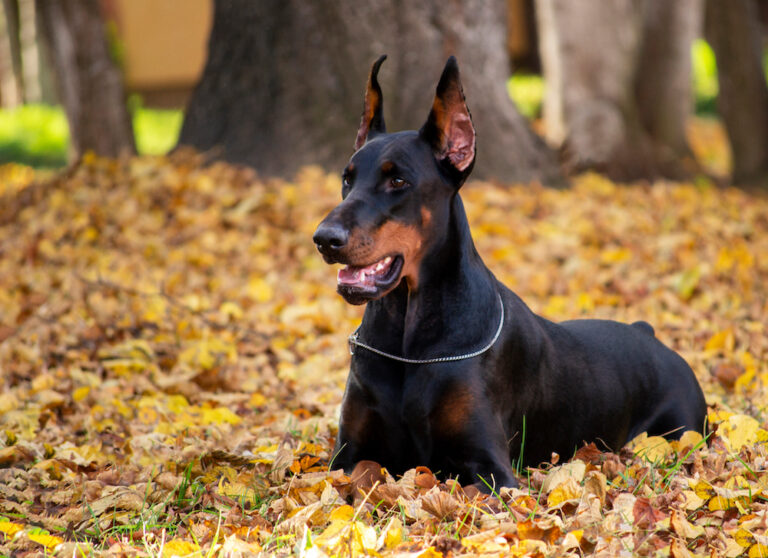
“Should I get a Doberman pinscher?”
If you’re here, you may already have some reasons that you’d like to bring a Doberman pinscher home. There’s much to recommend the breed, but living with one is also a huge responsibility. While any dog needs training and exercise, an adult Doberman is big, powerful, and smart—and an owner who’s not ready to give them the attention they need may end up in a situation that’s bad for dog and human alike. Dobermans may not get along with children who don’t approach them properly. If you’re going to bring a Doberman into a home with kids, make sure the children follow respectful dog etiquette and that you know the dog to be well-behaved around youngsters. And always supervise interactions between dogs and kids.
Having said all of that, a well-socialized Doberman will stick by their owner. Sharon Schiele, President and Founder of Delaware Valley Doberman Pinscher Assistance, who has owned Dobermans and worked in rescue organizations since the 1980s, remarks: “we always say they’re velcro.” Their personalities, vocalizations, and loyalty to their people are reasons that many swear by the breed.
Whenever you bring home any dog, you’re starting a relationship with an individual who may not conform to your expectations of the breed. If you’re considering an adult dog, see if you can get to know them first, perhaps by fostering or talking in detail with those who have been looking after them. And if you’re bringing home a puppy, know that, like people, dogs’ personalities may change over time.
Doberman pinscher breed history
Pop-culture Dobermans tend to be intimidating—Oliver and Company, Beverly Hills Chihuahua, and Up all feature aggressive or villainous dogs of the breed. And, yes, the Doberman’s early breeders intended for the dogs to be imposing: Mr. Dobermann himself wanted a protector for his rounds. But they’re intelligent dogs who develop strong attachments to friends and family.
The “pinscher” in the Doberman pinscher’s name comes from one of its likely ancestors, the German pinscher. The term may come from “the French word ‘pincer,’ meaning to seize or to nip.” Despite sharing “pinscher” in their names and having some aesthetic qualities in common, the miniature pinscher is a separate breed and not a smaller version of the Doberman. The DPCA says that “It is generally accepted as fact” that the Doberman pinscher mainly descended from the German pinscher and the old German shepherd, though there are no official records of its original breeding.
Because of Dobermans’ trainability and strength, they’ve excelled as working dogs. Most of the dogs that served in the Pacific with the US Marines as messengers and scouts during World War II were Dobermans, many of whom were credited with saving servicemen’s lives by alerting them to the presence of enemy forces and performing other significant duties.
Today, Dobermans continue to work in law enforcement and as service and therapy dogs. They’re also treasured members of families around the world.
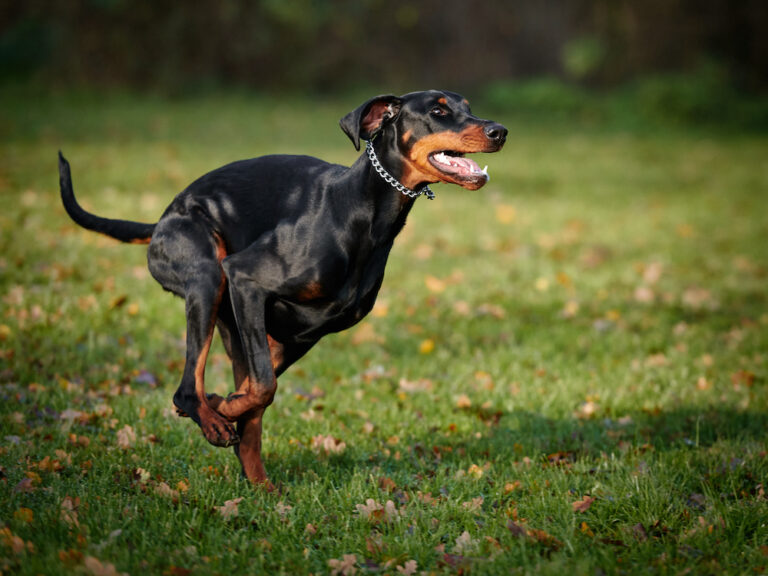
Doberman pinscher personality
Every dog is an individual, and there’s great variation among Dobermans. But many Doberman owners will tell you that there are trends and averages among the breed. Among them: Dobes are often “velcro dogs”—they love to be close to their owners, and will follow them from room to room. Including, yes, the bathroom. Dobermans also tend to be brave, alert, and protective, so you may notice them standing guard, especially in an unfamiliar environment. Doberman owner Andrew Backman says that his 7-year-old dog, Max, who “most likely is part Doberman, part pointer, part cattle dog, and who knows what else,” displays both of these traits: he “won’t let anyone [into]” their home, and is devoted to Andrew’s wife: “He follows her around everywhere.”
They’re eager to please and sensitive, so—as you would with any dog—treat them kindly and never roughhouse with them. Because of their disposition, Dobermans can become destructive if they aren’t given proper training and exercise. A bored Doberman who’s not given a job may find one for themselves, and it probably won’t be one that you’d choose. For their own happiness and to avoid issues at home, enrich their lives with plenty of fun, interesting things to do.

Doberman pinscher training
On average, Doberman pinschers are smart, trainable, and motivated to please their owners. “They want that ‘attaboy’ from you,” says Schiele. Given their abundance of physical and mental energy, they require a job to do and problems to solve.
Dr. Sophie Liu, a veterinarian at the San Francisco SFPCA and a Doberman owner herself, emphasizes exercise as a key element that goes hand in hand with successful training. “They probably need to run around for like an hour or two per day to be really happy,” she says, “and then that gives their training time to sink in.” As for the training itself, Liu says: “they’re pretty sensitive dogs,” and, as such, your training should be “consistent and fair.” This consistency extends to all members of your family: everyone should treat the Doberman the same way so that the rules are clear and their routine is stable.
She gives an example of unwanted barking, perhaps at squirrels, something that she says is common because of the breed’s high prey drive and vocal tendencies: “it’s not something that you need to freak out [about]… tell him to do something else instead and reward that.”
Schiele strongly recommends a training regimen to harness the Doberman’s energy and abilities, and to strengthen the bond between you. She also emphasizes the importance of warding off separation anxiety: “even when you’re at home,” she says, “let them spend some of the time doing their own thing” so that they’re confident when you’re not around.
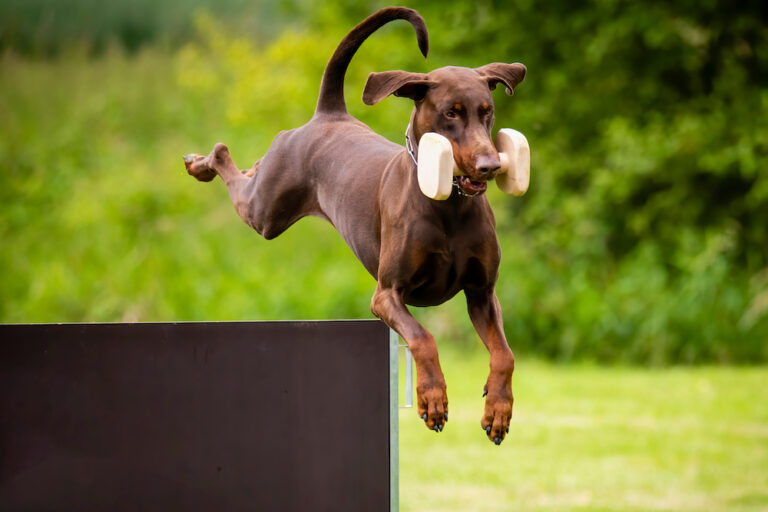
Healthy lifestyle for Doberman pinschers
Exercise
Dobermans need a lot of physical and mental exercise to be content. Per Schiele: “if you’re gonna get a working breed, don’t expect it to be a couch potato—because it’s not.” In addition to long walks and time romping around a yard, your Doberman may enjoy organized activities like agility, flyball, and many others. On rainy days, Schiele recommends activities like hide-and-seek or food puzzles. Consult with your vet to confirm that any exercise program or activity is appropriate; heart or joint issues may influence what’s best for your individual Doberman. And, of course, choose outlets that are a fit for your dog. If they’re not having fun, try something different.
Grooming and bathing
Dobermans have smooth, short coats, which are relatively low maintenance. You may be able to go six to eight weeks between baths, though this will change if your pal rolls around in the mud or otherwise gets dirty outside. For general bathing tips, check out our guide. You’ll also want to keep your Doberman’s nails trimmed, but be careful not to cut the quick—it’s tough to see with their nails’ dark color. Our article about dogs’ paws includes many ideas that may be useful during your trimming sessions.
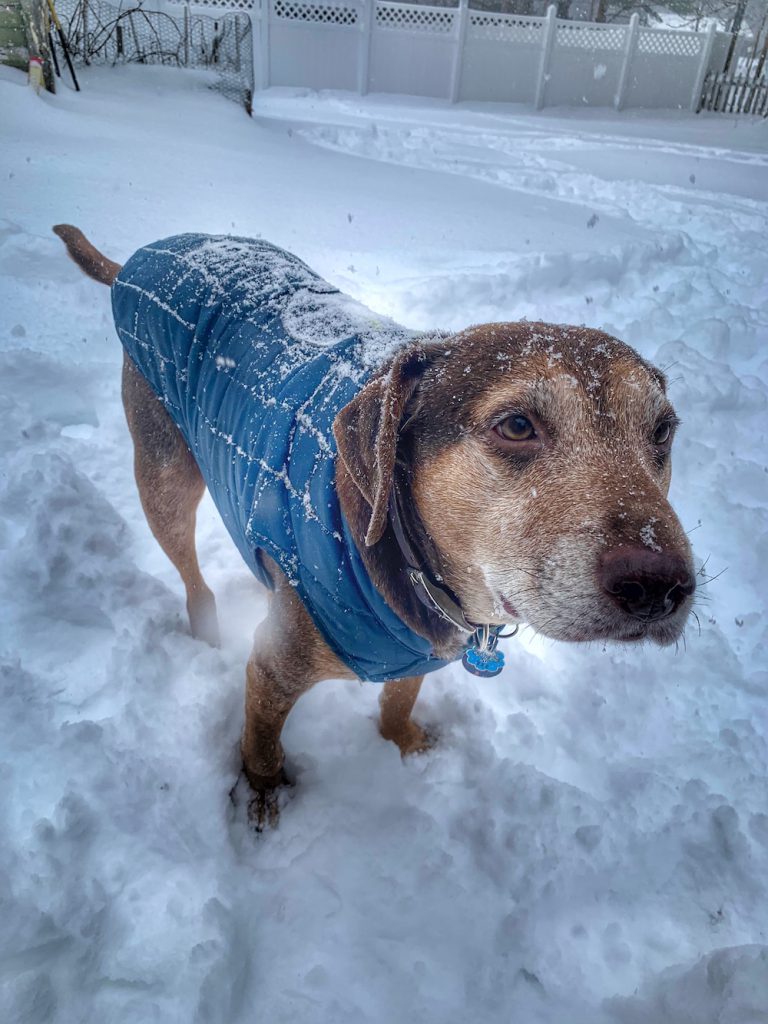
Max, a Doberman mix.
Common Doberman pinscher health problems
It’s important to provide any dog with regular preventative veterinary care—and Doberman owners should also keep in mind some health issues that are more common in the breed.
Dilated Cardiomyopathy (DCM): Dobermans are genetically predisposed to DCM, a very serious condition in which the heart has a reduced ability to pump blood. According to the Universities Federation for Animal Welfare, its prevalence in the breed is more than 50%. DCM can cut a Doberman’s life short—sometimes killing them within months—and the prognosis is worse if it’s left untreated. Dobermans should receive regular cardiac screening at the vet starting at 2 years old. Dr. Liu urges the use of Holter Monitoring and electrocardiograms . Early detection is key with DCM. “If you catch it early,” Dr. Liu says, “you could prolong the life of your dog or [improve] the quality of life for your dog.”
In the long run, scientists are working to reduce the instance of conditions like DCM through selective breeding. If you’re looking to rescue a Doberman, find out what you can about their health history. And if you’re going through a breeder, confirm that they test for DCM and other common conditions. “If they’re doing 24-hour Holters and echocardiograms annually on their dogs,” says Dr. Liu, “they really care.”
Wobbler Syndrome: Dogs with wobbler syndrome may be in pain or have trouble walking—the condition gets its name from the “wobbly” gait afflicted pets acquire in their rear limbs. The neurologic disease involves compression of the spinal cord or nerves in the neck area. The illness can progress to paralysis, and may shorten a dog’s life. In Dobermans, the disease usually emerges in middle age or later.
Scientists are not yet sure what causes wobbler syndrome—but genetics may be a factor, and it appears frequently in Dobermans.
Veterinary exams and imaging tests like MRIs may be useful in diagnosing Wobbler syndrome, and an Ohio State University study showed that 80% of dogs with the condition improved with surgery. Half improved with the use of drugs and other non-surgical management techniques.
Von Willebrand’s Disease (VWD): Dogs with this inherited disorder don’t have enough of a protein that helps blood clot, and Dobermans are the most likely breed to suffer from the condition. While some dogs with VWD will not show symptoms, others may bruise or bleed excessively. Injuries and surgeries are particularly dangerous for dogs with this issue. The DPCA advises breeders to use a DNA test for this illness to avoid passing it on through breeding. If you’re getting a Doberman with a known genetic history, ask whether they’ve been screened for it—and if you already have a Doberman who hasn’t been screened for VWD, talk to your vet about it. Knowing that a dog has VWD will impact how vets treat injuries, which medications they prescribe, and their approach to surgical procedures.
Albinism: This is another inherited issue, and albino Dobermans should not be bred. As mentioned above, albino Dobermans are at an increased risk of a variety of serious health conditions including photosensitivity and skin cancer.
Hip dysplasia: This is a condition in which the ball and socket of the hip joint do not fit together properly, which could lead to arthritis or degenerative joint disease. Because hip dysplasia can cause your dog pain or cost them the use of the impacted joint, it’s important that your vet pays close attention to your Doberman’s hips during checkups. If you notice symptoms like a newly limited range of motion, diminished willingness to move around, hopping, pain, or limping, have a vet check your dog out.
Hypothyroidism: The DPCA recommends annual thyroid testing due to the prevalence of this condition, which can cause weight gain, lethargy, high cholesterol, and other issues. Hypothyroidism is not curable, but it can be treated via synthetic hormone replacement.
Bloat: Like many large-breed dogs, Dobermans are predisposed to bloat, also known as gastric dilatation-volvulus (GDV). It’s a life-threatening condition that requires immediate medical attention—minutes can make the difference. If you notice a distended abdomen, retching, or signs of pain, contact a veterinarian as soon as you can. For much more about bloat, read our guide.
Chronic Active Hepatitis: Dobermans are among the breeds most likely to develop this condition, in which the liver becomes inflamed. CAH may be related to elevated levels of copper in the liver and blood. It’s more common in females than males, and tends to be diagnosed in middle age. Early signs can be difficult to spot, but include abdominal pain, fatigue, diarrhea, and weakness. Veterinarians may be able to treat CAH if it’s caught before it reaches an advanced stage, but if the disease progresses it can lead to much more serious symptoms like jaundice and confusion, liver failure, and death.
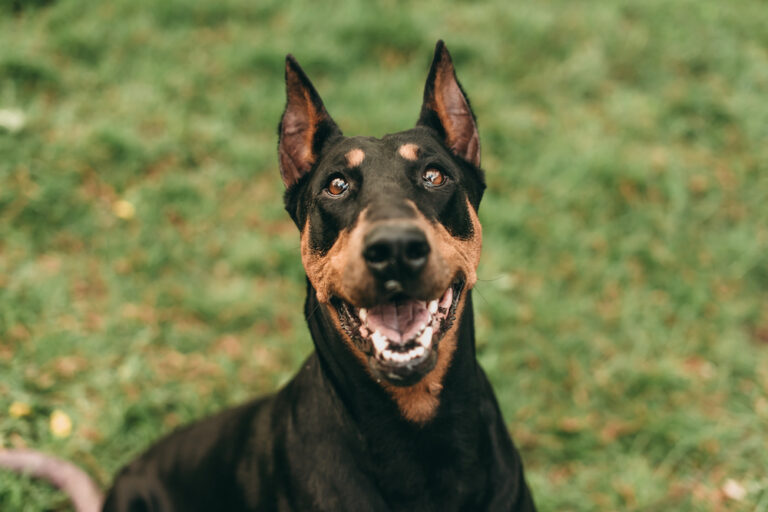
Food and nutrition for Doberman pinschers
Like any other dog, Dobermans need digestible, complete and balanced food that supplies enough energy for daily activities while helping maintain a healthy weight. A pre-portioned meal plan can supply a boost on all of these fronts.
Support joint health: A fresh diet that provides balanced Omega-3 fatty acids could be an asset as you seek to ward off the joint issues common in large breeds. A pre-portioned fresh food plan also makes it easy to feed the right number of calories every day. This helps maintain a healthy weight, which is another big factor in keeping joints healthy and staving off a whole raft of other health issues.
Feed careful growth: Large-breed dogs like Dobermans typically take longer to fully develop their musculoskeletal system when they’re growing from puppyhood to adulthood. This means that some Dobermans won’t stop growing until they’re 2 years old. It’s important they grow at a healthy rate, because growing too fast can cause orthopedic diseases and obesity. Avoid free-feeding. Instead, structure meal size and time—feed a correctly portioned amount of food to a young puppy three to four times per day until around 6 months, then switch to twice a day.
High-quality food for high-quality poops: A diet of fresh, lightly cooked food has been shown to be more digestible than processed kibble, and can promote a healthy gut and good digestion (which also means better, smaller poops).
A healthy, fresh diet—alongside ample exercise, training, vet care, and a job to do—is among the keys to giving your Doberman a happy life.

Where to get a Doberman Pinscher
If you’re looking to adopt a Doberman or a Doberman mix, a good place to start is a rescue like Delaware Valley Doberman Pinscher Assistance or Dobies and Little Paws Rescue.
